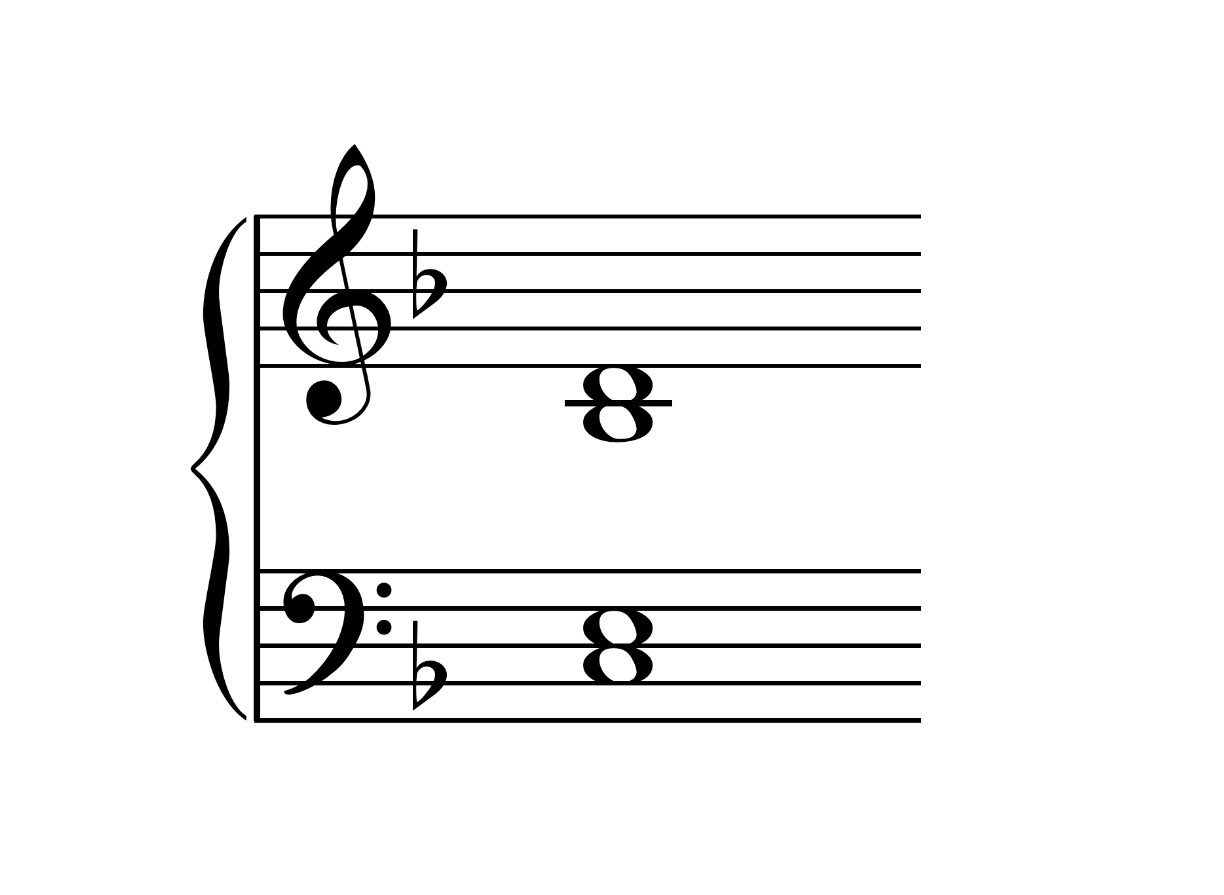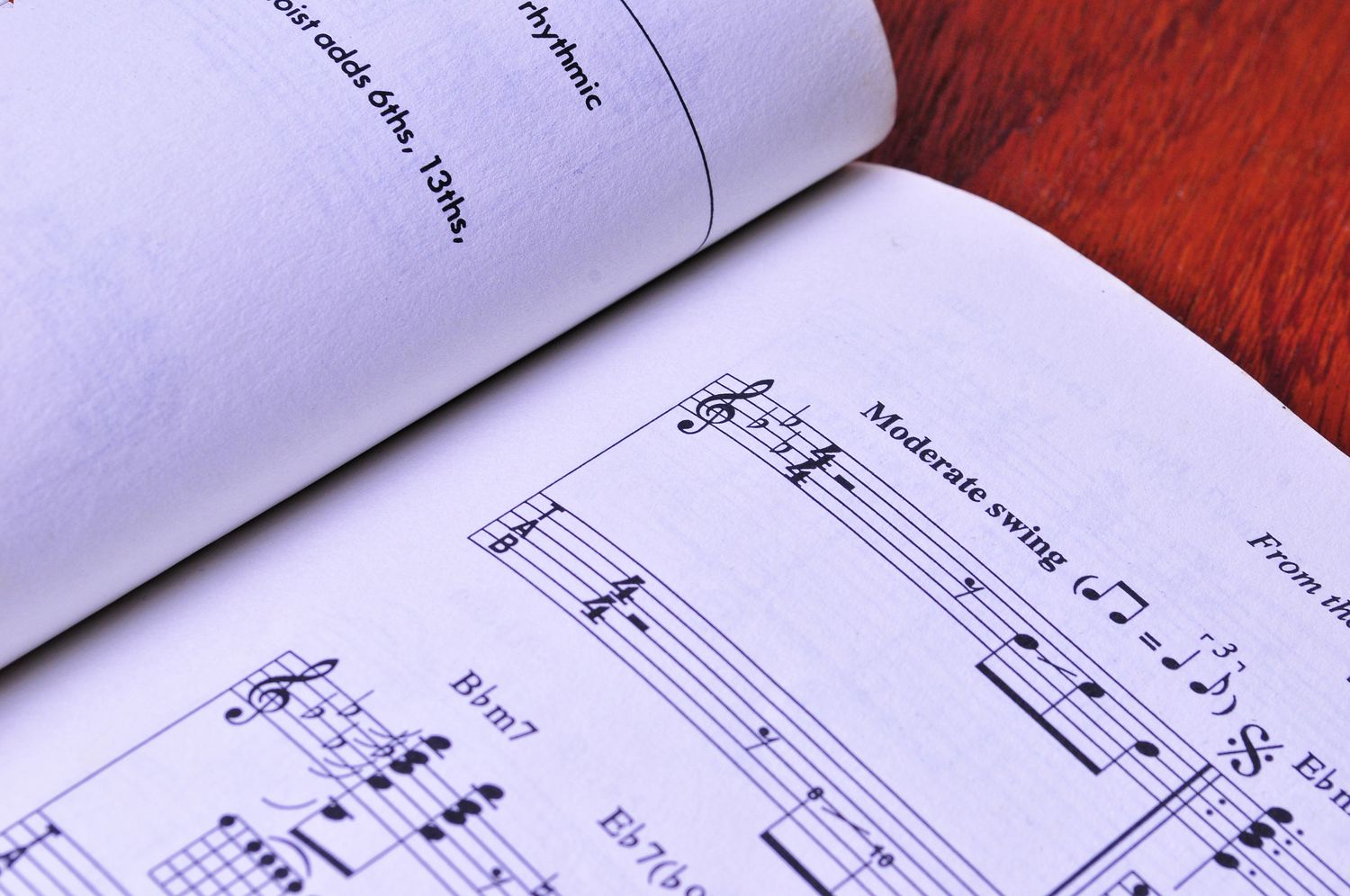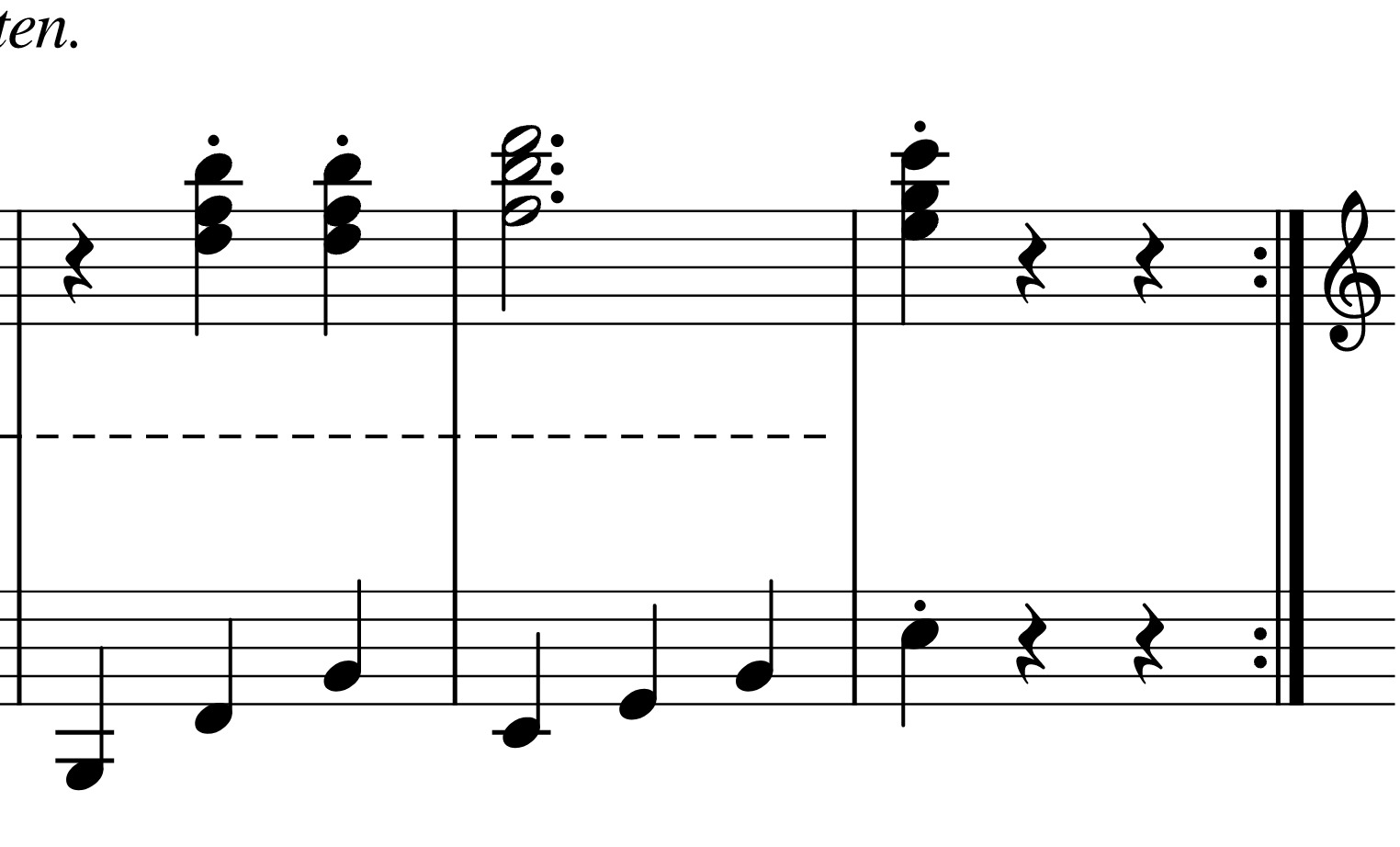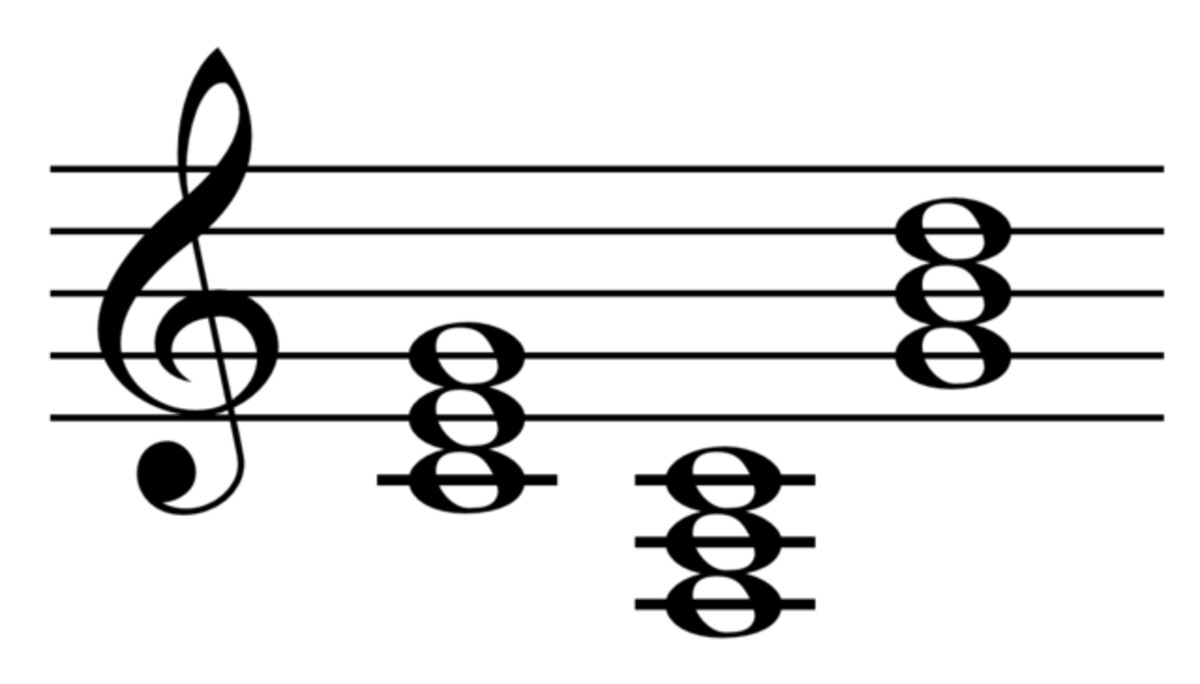Home>Production & Technology>Music Theory>What Is A Fifth In Music Theory


Music Theory
What Is A Fifth In Music Theory
Modified: January 31, 2024
Discover the meaning and significance of a fifth in music theory, a fundamental concept that enhances your understanding of harmonic relationships. Expand your knowledge of music theory with our comprehensive guide.
(Many of the links in this article redirect to a specific reviewed product. Your purchase of these products through affiliate links helps to generate commission for AudioLover.com, at no extra cost. Learn more)
Table of Contents
Introduction
Welcome to the world of music theory, where we explore the fundamental principles that govern the construction and composition of music. In this article, we will focus on one of the most important concepts in music theory – the fifth. Whether you are a musician, a music enthusiast, or simply curious about the inner workings of music, understanding the concept of a fifth is essential.
The fifth is a term used to describe a specific interval between two notes in music. It plays a vital role in creating harmonies, chord progressions, and melodies. It is a fundamental building block in Western music and has been used for centuries to create beautiful and compelling compositions.
Throughout this article, we will delve into the definition and construction of a fifth, explore its role in harmony and chord progressions, and discuss its significance in Western music. By the end, you will have a deeper understanding of the fifth and its importance in music theory.
Definition of a Fifth
In music theory, a fifth refers to the interval between two notes that are five letter names apart. It is called a fifth because it spans five diatonic scale degrees within an octave. To understand this concept better, let’s take a look at the C major scale as an example. The notes in the C major scale are C, D, E, F, G, A, and B.
If we start from the note C and count up five scale degrees, we land on the note G. This interval from C to G is considered a fifth. Similarly, if we start from the note A and count up five scale degrees, we reach the note E, forming another fifth interval.
The distance between the two notes in a fifth can be measured in terms of semitones. In the case of a perfect fifth, the interval consists of seven semitones. This interval is characterized by its rich and consonant sound, making it pleasing to the ear. On the other hand, an augmented fifth, also known as a tritone, consists of eight semitones and has a more dissonant and tense sound.
It’s important to note that the concept of a fifth is not limited to just the major scale. It applies to any diatonic scale, as well as the chromatic scale. In each case, the fifth interval maintains its unique characteristics and relationship between the two notes.
Construction of a Fifth
The construction of a fifth is based on the fundamental principles of the musical alphabet and the intervals between notes. To understand how a fifth is constructed, let’s go back to our example of the C major scale.
Starting from the note C, we count up five scale degrees: C, D, E, F, G. The interval between C and G is a fifth. We can also think of it as moving from the 1st note of the scale (C) to the 5th note (G), hence the term “fifth.” This pattern remains true for any major scale.
In terms of semitones, a perfect fifth interval consists of seven semitones. This means that there are seven half steps, or half tone intervals, between the two notes that form a perfect fifth. For example, from C to G, we have C#, D, D#, E, F, F#, G – seven semitones in total.
The construction of a fifth can also be expressed in terms of the ratio between the frequencies of the two notes. In Western music, the frequency ratio for a perfect fifth is approximately 3:2. This means that the frequency of the higher note is 1.5 times the frequency of the lower note. This ratio creates a harmony that is pleasing to the ear.
It’s important to note that the construction of a fifth can vary depending on the tuning system used. In equal temperament tuning, which is the standard in Western music, the intervals are divided equally, resulting in slight variations from the pure ratios. However, the concept and construction of a fifth remain consistent across different tuning systems.
Role of the Fifth in Harmony
The fifth plays a crucial role in creating harmony in music. It forms the foundation of many chords and is a vital element in establishing tonality and consonance.
One of the primary ways the fifth is used in harmony is through the construction of power chords. Power chords are two-note chords consisting of the root note and the perfect fifth above it. These chords are commonly used in rock, punk, and metal genres to create a strong and powerful sound. For example, in the key of C, a power chord would consist of the notes C and G.
In addition to power chords, the fifth is an integral part of triads, which are three-note chords formed by stacking thirds. In a major chord, for instance, the fifth is typically added above the root note and the major third. This combination of notes creates a consonant and stable sound. Similarly, in a minor chord, the fifth is added above the root note and the minor third.
The fifth also plays a significant role in establishing tonality. In the major scale, the fifth is considered a stable and consonant interval. This stability is crucial in creating a sense of resolution and rest in a musical piece. The relationship between the root note and the fifth helps to anchor the tonal center and provide a solid foundation for other chords and melodies to be built upon.
Furthermore, the fifth is often used to create harmonic tension and release. By altering the perfect fifth slightly, we can create a dissonant interval known as a tritone. The tritone is highly unstable and demands resolution. This tension and resolution between the tritone and other intervals help to create musical interest and a sense of movement within a piece.
In summary, the fifth serves as a building block for harmonies in music. It provides stability, creates power chords and triads, establishes tonality, and contributes to the tension and resolution within a musical composition.
Use of the Fifth in Chord Progressions
The fifth is a vital component in creating chord progressions that form the backbone of many musical compositions. It adds depth, tension, and resolution to the progression, creating a sense of movement and emotional impact.
In a typical chord progression, the fifth often acts as a pivot point between different chords. For example, in the key of C major, the chords C, F, and G are commonly used. The fifth of each chord (G, C, and D, respectively) forms a strong connection between them. This creates a smooth transition and helps to maintain a coherent and compelling progression.
The use of the fifth in chord progressions also impacts the tonal quality and mood of a piece. Progressions that emphasize the perfect fifth tend to sound stable and consonant, while those that utilize other intervals, such as the tritone, can create a more dissonant and unresolved feel. By strategically incorporating the fifth in different parts of the progression, composers can evoke specific emotions and shape the overall musical atmosphere.
An interesting technique that involves the fifth is the concept of the circle of fifths. The circle of fifths is a visual representation of the relationships between different keys and their corresponding fifths. It is a useful tool for understanding chord progressions and harmonic relationships in music theory. By moving clockwise around the circle, each key is a fifth above the previous one. This progression maintains a sense of musical continuity and is often used to create smooth modulations or key changes within a composition.
When it comes to chord voicings, the fifth can be omitted in certain instances to create different musical effects. For example, in a power chord, only the root note and the fifth are played, omitting the third. This omission results in a more ambiguous and neutral sound, often associated with rock and blues music.
In summary, the fifth plays a crucial role in chord progressions by acting as a connection point between different chords, shaping the tonality and mood of a piece, and aiding in modulations. Its versatile and integral nature makes it a powerful tool in the hands of composers and musicians.
Importance of the Fifth in Western Music
The fifth holds immense importance in Western music and has shaped the foundations of music theory and composition for centuries. Its unique qualities and harmonic properties have had a profound impact on the development of Western musical traditions.
One of the primary reasons for the significance of the fifth is its role in establishing tonality. The relationship between the root note and the fifth forms a strong harmonic foundation and helps define the tonal center of a musical piece. The fifth acts as a reference point for other chords and melodies and contributes to the overall sense of cohesion and stability.
The use of the perfect fifth in chord progressions and harmonies creates a sense of consonance and resolution. It provides a satisfying and pleasurable sound to the ear, making it a cornerstone in creating harmonically pleasing compositions. Through the centuries, composers have utilized the perfect fifth to create powerful and emotive musical moments.
The fifth also plays a key role in the formation of chords. Triads, which are three-note chords, rely on the inclusion of the fifth to complete their structure. Major and minor chords, which are fundamental to Western music, incorporate the perfect fifth alongside the root note and third, further emphasizing its significance.
Furthermore, the use of the fifth in chord progressions allows for a wide range of harmonic possibilities. Its inclusion creates tension, release, and movement, shaping the emotional arc of a musical piece. By utilizing the perfect fifth in various ways, composers can evoke different moods, convey powerful emotions, and guide the listeners through a transformative musical experience.
The study and understanding of the fifth in Western music theory has led to the development of a vast repertoire of musical techniques and styles. It has influenced the composition of symphonies, sonatas, operas, and countless other genres. From the works of Bach and Mozart to Beethoven and beyond, the importance and use of the fifth can be found in the masterpieces of Western classical music.
In addition to classical music, the fifth has also played a significant role in popular music genres. It forms the basis of many rock and blues guitar riffs, adds depth to jazz chord progressions, and enhances the emotional impact of contemporary pop songs.
In summary, the fifth’s importance in Western music cannot be overstated. It serves as a defining element in establishing tonality, creating harmony, and shaping emotions in compositions. Its influence permeates through centuries of musical traditions, making it an essential concept in the study and appreciation of music.
Conclusion
In conclusion, the fifth is a fundamental concept in music theory and holds immense significance in Western music. Its role in creating harmonies, chord progressions, and tonalities cannot be overstated. The fifth acts as a building block for constructing chords, establishing tonal centers, and creating musical tension and resolution.
From the construction of power chords to the formation of triads and the use of the perfect fifth in chord progressions, this interval plays a crucial role in shaping melodies and harmonies. Its distinct characteristics, such as consonance and stability, contribute to the overall musical experience.
Throughout Western music history, composers have relied on the fifth to create powerful, emotive, and memorable compositions. It has been used in the works of classical masters and has transcended genres to become an essential element in popular music as well.
Understanding the concept and importance of the fifth opens up a world of possibilities for musicians, composers, and music enthusiasts. It provides a deeper understanding of how music is structured, how chords and melodies interact, and how emotions are conveyed through sound.
As you continue to explore music theory and delve deeper into the intricacies of composition, keep in mind the essential role that the fifth plays. Embrace its power, experiment with its various applications, and let it guide you in creating harmonious and captivating musical expressions.
In conclusion, the fifth is a cornerstone of music theory, a pillar of harmony, and a driving force behind the construction of chords and melodies. Embrace its power, experiment with its various applications, and let it guide you in creating harmonious and captivating musical expressions.











